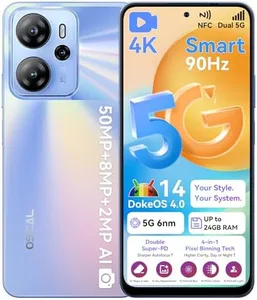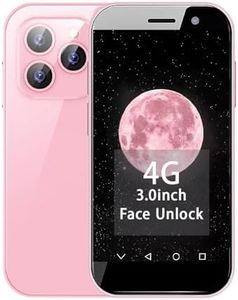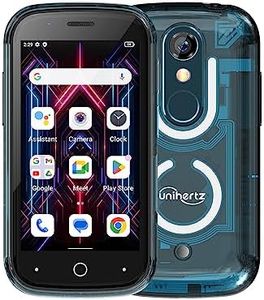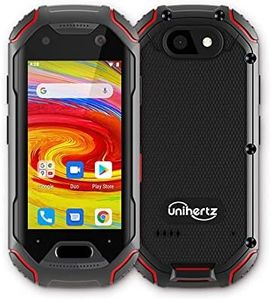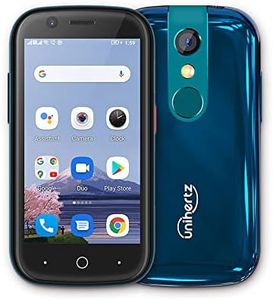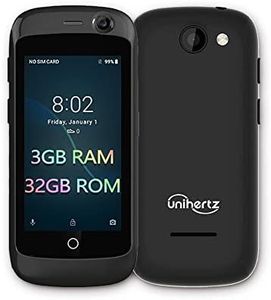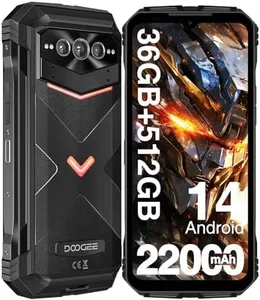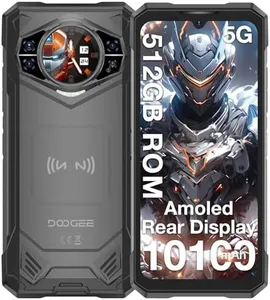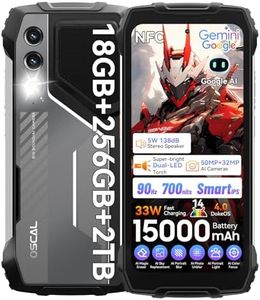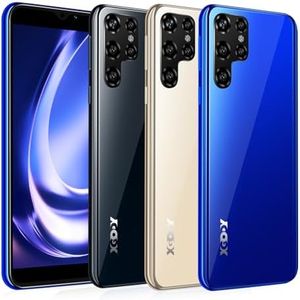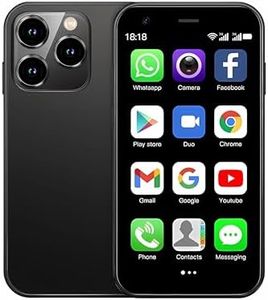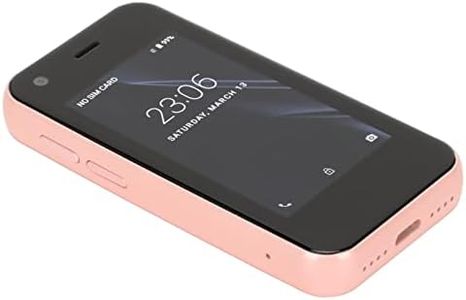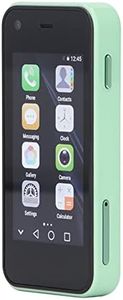9 Best Mini Smartphones 2025 in the United States
Our technology thoroughly searches through the online shopping world, reviewing hundreds of sites. We then process and analyze this information, updating in real-time to bring you the latest top-rated products. This way, you always get the best and most current options available.

Our Top Picks
Winner
IBOZOU Mini 4G Unlocked Smartphone 3.0 Inch Dual Sim Quad Core 2600mAh Kids Mini Phone Premium Child Phone Small Phone Student Pocket Cellphone, 3+32GB (Girl Pink)
Most important from
24 reviews
The IBOZOU Mini 4G Unlocked Smartphone is a compact device with a 3-inch HD screen, making it highly portable and easy to carry. This mini smartphone is particularly suitable for kids or as a backup phone due to its dual SIM capability and lightweight design. With a 2600mAh battery, it offers decent battery life for everyday tasks.
The phone runs on Android 12.0, providing access to a wide range of apps from the Google Play Store, such as Facebook, YouTube, Instagram, and more. It supports voice calls, video calls, GPS navigation, and other essential functions, making it a versatile device for its size. However, the 3-inch screen might be too small for users who prefer larger displays for media consumption or extensive typing.
Performance-wise, it features a quad-core processor and 3GB of RAM, which should be sufficient for basic tasks but may struggle with more demanding applications. The build quality and design are aimed at children, with a cute and sturdy feel, available in pink, black, and purple. This phone is best suited for children, students, or users needing a compact secondary phone for light use during activities like cycling, hiking, or traveling.
Most important from
24 reviews
Unihertz Jelly Star, The World's Smallest 4G Android 13 Smartphone Transparent Design LED Light NFC OTG, Blue (Support T-Mobile & Verizon only)
Most important from
273 reviews
The Unihertz Jelly Star is marketed as the world's smallest 4G Android smartphone, offering a unique blend of compact size and modern features. Its standout characteristic is the 3-inch display, which is incredibly small compared to most smartphones today. This makes it an interesting choice for those who prefer a device that can easily fit in a pocket or be used one-handed. The transparent design with dynamic LED notifications adds a cool factor, appealing to users looking for something visually distinct.
One of its key strengths is the camera quality, featuring a 48 MP rear camera, which is quite impressive for a smartphone of its size. It also boasts a powerful Octa-Core MediaTek Helio G99 processor, combined with 8GB of RAM, ensuring that it can handle everyday tasks smoothly. With 256GB of storage, users won't have to worry much about running out of space.
However, there are notable drawbacks. The 2000 mAh battery might not last a full day with heavy usage, especially given the demands of modern apps. The resolution of 854 x 480 pixels also falls short of current standards, which may disappoint users who prioritize visual clarity. Additionally, it's essential to note that the Jelly Star only supports T-Mobile and Verizon in the US, which may limit its appeal to users on other carriers. The Jelly Star runs on Android 13, which is a plus for those looking for a more recent operating system. It includes features like NFC, dual SIM support, and a fingerprint unlock, adding convenience for everyday use.
The Unihertz Jelly Star is a fun and functional mini-smartphone that caters primarily to individuals looking for a compact device with decent performance and unique design. However, potential buyers should consider its limitations in battery life and display quality before making a decision.
Most important from
273 reviews
Unihertz Atom - The World's Smallest 4G Rugged Smartphone with Android 9.0 Pie, Unlocked, 4GB RAM, and 64GB ROM (T-Mobile & Verizon Support)
Most important from
1220 reviews
The Unihertz Atom is an interesting choice in the mini-smartphone category, particularly for those looking for a compact and rugged device. With a screen size of just 2.4 inches, it's one of the smallest 4G smartphones available, making it extremely portable. This could be appealing for users who prioritize ease of carrying and simplicity in use. The small screen may be limiting for anyone who enjoys consuming media or requires a larger display for tasks like browsing or navigation.
Battery life is decent with a 2000 mAh capacity, offering around 6 hours of talk time, which may suffice for casual users but could fall short for heavy users or those who rely on their phone throughout the day. The phone runs on Android 9.0, which is an older operating system compared to newer versions, possibly missing out on some latest features and security updates.
In terms of performance, it comes with 4GB of RAM and a 2.4 GHz CPU, which should handle basic tasks, but may struggle with demanding applications or multitasking. The camera quality, while sufficient for casual snapshots, may not meet the expectations of users looking for high-quality photography. With a resolution of 240 x 432, images may appear less sharp compared to modern standards. The build quality is notably rugged, making it suitable for outdoor activities or for those who tend to be a bit rough with their devices. The phone does not come with a charger in the box, which could be inconvenient for some users. The Unihertz Atom supports T-Mobile and Verizon, but may not work seamlessly with all carriers, which is a consideration for potential buyers.
Most important from
1220 reviews
Buying Guide for the Best Mini Smartphones
When choosing a mini-smartphone, it's important to consider your specific needs and preferences. Mini-smartphones are compact and easy to carry, making them ideal for users who prioritize portability and convenience. However, they can vary widely in terms of performance, battery life, camera quality, and other features. Understanding the key specifications will help you make an informed decision and find the best mini-smartphone for your lifestyle.FAQ
Most Popular Categories Right Now
